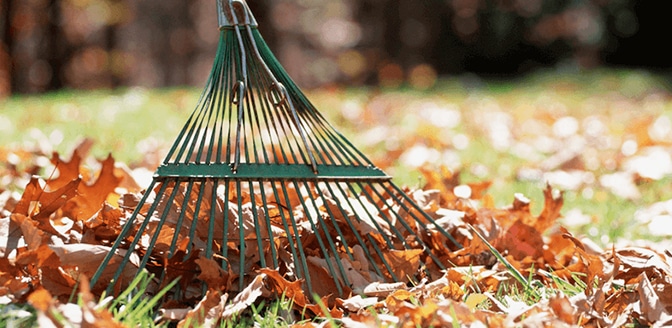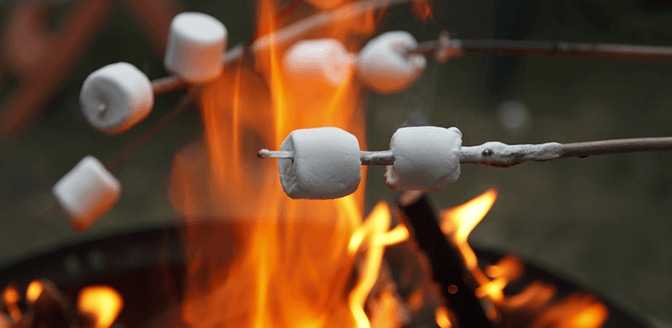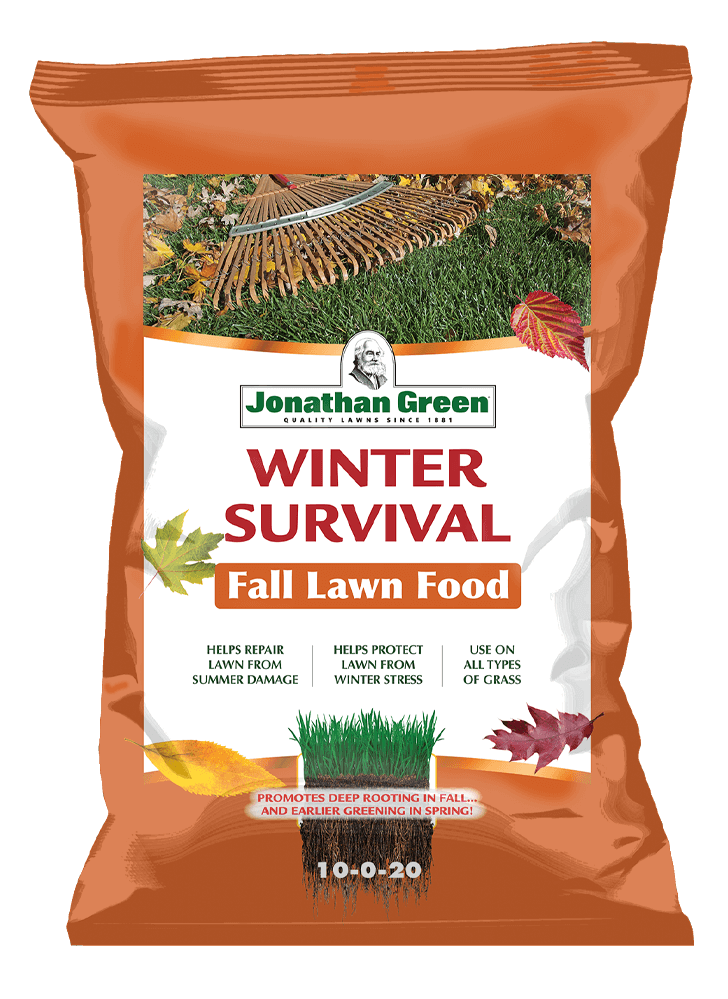10 Easy Steps to Get Ready for Winter This Year
Cold weather has arrived, which means that it’s time to winterize your property! There are many tasks that can be completed now to avoid damage from snow, salt, and ice. From taking care of the lawn to preparing for some fun nights in the backyard, we’ve got you covered! These ten tips will help you get ready for the cold months ahead.

1. Fertilize the Lawn
It’s very important to fertilize your lawn before winter hits. It’s best to feed your lawn once in early fall, and then again in late fall. Think about your lawn as a hibernating bear. The bear needs to eat more than usual in fall to be able to survive through a long cold winter. It works the same way with lawns. Feeding your lawn now will give it the nutrients it needs to survive the winter and will help prevent damage and disease such as snow mold.
If you haven’t fertilized your lawn this fall, do so now. However, be aware of local “black-out” laws that prohibit applying lawn fertilizers after certain dates. Choose a fertilizer that is high in potassium to help promote deep rooting like Winter Survival Fall Lawn Fertilizer.
2. Cut the Grass to a Lower Height
During the growing season, your mowing height should be around 3 inches. This may vary depending on the type of grass you have but a good rule of thumb is to never take off more than one-third of its height. However, before winter it’s important to always drop your mowing height down to about two inches. This lower mowing height will help prevent disease.
If the grass is too long, it will become matted under the weight of the snow, which can lead to disease or fungus. If the grass is too short, then the root system will become stressed, leading your grass to die out. Two inches is the sweet spot- not too long and not too short.
3. Remove All Leaves From the Lawn Before it Snows
Removing or mulching the leaves throughout fall and into winter is always a good idea but it is especially important to remove the leaves before it starts to snow. Leaves that are left on the ground can collect water and block out sunlight, creating bare spots on the lawn. Also, leaves are acidic which means that leaving them in piles on the lawn can cause a decrease in your soil pH.
Removing leaves before it snows is important for the same reason as it is to mow shorter. The layer of wet leaves will mat the grass and create more opportunities for disease to arise.
4. Drain Irrigation Systems
Another important task to avoid future damage is to drain your automatic irrigation system. The freezing and thawing of water throughout winter can corrode pipes or tubes and cause the plastic to crack. If you are not sure how to do this yourself, contact the company that installed or manufactured the sprinkler system. The last thing you want is to find that your new irrigation system is unusable come springtime.
If you do not have an irrigation system, make sure to drain and coil hoses. Store them with your sprinkler heads, and nozzles in a place where they will not freeze.
5. Protect Shrubs and Plants
The winter weather can be harsh for shrubs and other ornamental plants on your property. You can cover your plants with burlap or spray them with anti-desiccant to help prevent drying out and winter windburn. Another good way to protect your plants is to add a new layer of mulch around the base. A three-inch layer of mulch that decomposes over time acts as a natural, slow-release fertilizer. Remember to leave a half-inch ring for circulation around the plant’s stem or trunk and to prevent rot.
6. Winterize Your Mower
Once you have done your last mow of the season, you can winterize your mower. Giving it a tune-up now will ensure that it starts right up again come springtime.
First, remove the gasoline and either use it immediately if it does not have preservatives in it or save it for next spring if it has preservatives. If your mower is battery powered, remove the battery and clean it well. Store either the gasoline or battery in a dry safe place away from flammable substances and away from warm places like next to a water furnace. Next, replace the spark plugs.
Now is also a good time to change the oil. If you have not changed the oil all season, it probably needs to be replaced. You should also clean and sharpen the mowing blades, making sure that there is not any moisture left on them to prevent rust. Lastly, clean the entire mower with a damp cloth and store it properly. This will prevent any caked-on dirt or grass from sticking permanently to the mower.
Another option is to have a lawn mower repair professional do this maintenance for you. Like all of the other tips in this article, doing the work now will prevent you from spending time, energy, and money later. After a cold winter of being indoors, you’ll be excited to get back into the lawn again, so you want all of your equipment to be as ready as you are.
7. Plan Snow Removal
Waiting until the last minute to research and hire a snow removal company is never a good idea. Do the research now to save yourself time and money later. Imagine a snowstorm hits and you can’t get out of your driveway! If you have someone in mind that usually does your snow removal, contact them now.
If you are not hiring someone else, make sure you have the equipment you need now. Snow blowers, shovels, gloves, and boots should be on hand for when the time comes.
8. Buy Ice Melter
You’ll probably need ice melt at least once this winter, so it’s a good idea to stock up now before local stores run out. Many ice melts are harsh and can stain your driveway and sidewalks, but Melt-A-Way™ Ice Melter is safer to use on lawns, shrubs, and concrete than other formulas. Best of all, it won’t ruin your shoes!
Mentioned Products
9. Reorganize Lawn Care Tools
Winter is a great time to reorganize your lawn care tools. If you have any winter tools or snowblowers bring them to the front of your shed or garage. Tools you will be using less like mowers should be moved to the back. This is also a great time to store any hoses or gardening tools that you won’t be needing throughout the winter.
While you’re reorganizing your shed, get rid of things that you don’t use or need anymore! Instead of moving things that you haven’t used in years to the back, take the time to pack them up and donate or get rid of them. This way, when you come back to the shed in springtime you won’t have to struggle to find your lawn and gardening gear.

10. Prepare for Nights Around the Fire!
This year more than ever it will be great to have a fire pit to enjoy with friends and family outside. If you don’t have one, you can build one easily with stones or bricks. Now is also a good time to collect firewood and store it in a dry place. Once it starts to snow you won’t want to go trudging through the cold to collect branches. Alternatively, if you see firewood in stores now, pick some up!
We hope these tips will help you prepare for the winter months ahead. The more you get done now, the easier it will be to enjoy winter without having to worry about your property.

